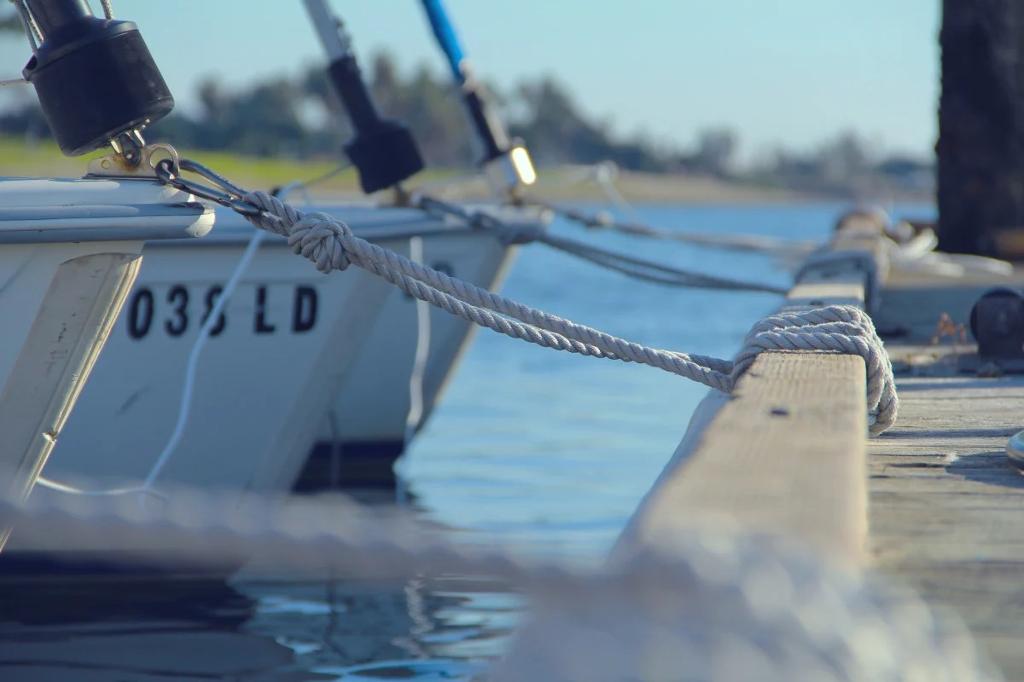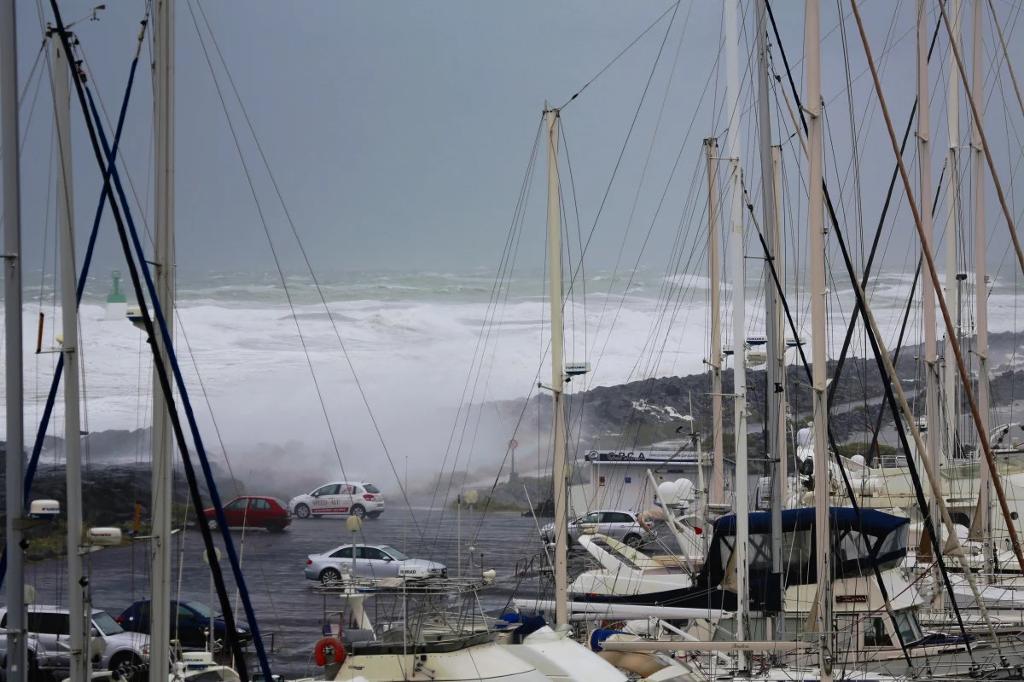Boat Winterizing is a common task for many boat owners, regardless of where your boat is located. For some, in milder winter conditions, it means keeping everything dry and tidy, but for many, with more severe winters where it snows and even freezes, the need for packing up the boat for winter is a necessity. This article from our blogger Dave Proctor will guide you through the preparation for the winter to avoid some unpleasant surprises next spring.
Autumn is now upon us, and for many of us, it is time to finish sailing after the summer season and to prepare our boats for winter. Some of us will be taking our boats out of the water, possibly placing them under cover. For others, their boats will remain on the water. This article is an aid to help you to make sure your boat is protected from the weather ahead. Remember it is far easier to protect your boat rather than repair it!
Where and how to store your sails in the winter?
Sails are obviously expensive pieces of kit and should be treated accordingly, I would recommend removing the sails from the boat completely and storing them in a dry place like a sail loft (or in most cases, a garage).
Leaving them on the boat in situ means that they are at the mercy of the elements. I have seen furled foresails ripped open by gales and then shredded on their stays. I have seen mouldy sails, where water has ingressed the sail covers and I have seen the detritus left by seagulls nesting in the folds of a stacked mainsail.
If your boat is in the water, then it is a naturally damp atmosphere, so again I would not recommend leaving the sails down below for extended periods of time.
Check all your standing rigging for signs of rust or broken wire strands for boat winterizing
When checking your standing rigging pay attention to wire / rod stays and metal interfaces, such as toggles and turnbuckles. On the wires check for rust and specifically where wire goes into swage fittings - that is the focal point for stress and metal fatigue. Any sign of rust or broken strands of wire at this point and you should have an expert look at all your rigging. It can be an early indicator of problems developing further.
Most rigs fall down due to fitting failure - what you are looking for are signs of the smallest cracks in toggles, turnbuckles, swaged eyes and other connection fittings. This can be age-related, but an important thing is to check fitting alignment. Mis-alignment (to the load direction) can dramatically increase metal fatigue and be the cause of cracks developing. Even on a new set of rigging you need to be checking that fittings are sitting properly and that the pin sizes are correct.
For boat winterizing I would also consider whether to change over to composite rigging. The advantages are manifold, and this may be a great time for it.
Inspect all the ropes before packing up your boat
For boat winterizing is the time to thoroughly examine all of your running rigging. Look for signs of chafing and wear.
It is preferable to remove lines from the boat to keep them clean and store them a dry place. You can cut down 50% of the UV exposure on the halyards by taking them off the boat for the winter. If you are set up for it, the mousing halyards is very quick and easy operation. If you prefer to leave the halyards and lines on the boat, where the lines go across decks use a plastic bottle between the lines and the deck to lift them to ensure that any mould they develop does not mark the deck.

For boat winterizing I would recommend checking the age of the lines and consider what needs replacing this winter. For any ropes need please visit our pages by clicking below:
Thoroughly check your fenders and mooring lines for boat winterizing
Firstly for boat winterizing, check that all fenders are in good condition. Consider the worst-case scenario: If there is a violent storm, how would your boat move? Ask yourself if you have enough protection. Maybe invest in some extra or new fenders.
When leaving a boat on a mooring or at a marina over the winter - switch to traditional rubber fenders. If you have rubber fenders - check they have not gone brittle with UV exposure after the summer. For boat fenders see our range by clicking the button below:
Check your mooring lines and maybe double them up. To prevent too much movement whilst moored, consider whether it might be wise to put in a spring system.
Take anchor chain out of anchor lockers - clean the locker and chain and keep the chain in a dry place over winter. Obviously, not if you are on a mooring! For mooring products view our shop for more information:
Winches winter coverage and annual maintenance for boat winterizing
Also for boat winterizing, have a look at your winches. Make sure that they are properly protected with grease and even cover them. I strongly advise investing into winch covers for the winter! Winches are an expensive investment and if properly looked after can last for over 30 years. You can get them made at your nearest sailmakers.
Winch service kits are something to have in your tool box! An annual revision and winch strip-down is recommended to replace pawls, springs and grease. During this process look for signs of wear on the gears and spindles. All the manufacturers have an extensive list of spare parts available on request. These parts are not commonly available online or from the chandlers, but Upffront.com has full parts lists and these parts are available from manufacturers to replace virtually every component in a winch!
See our offer on winch service kits and winch accessories below:
What to do about your boat’s engine in the winter?
It is a good idea that any marine engine is serviced at this time of year. Your engine will be protected over the winter with good clean oil, that has protective additives (before they are depleted by use). It is also advisable to refresh the cooling system with good fresh coolant/anti-freeze. It is preferable to try to run the engine for a short time every month if you are able. Another tip for boat winterizing, is that whilst the engine is out of use, put some rags into the exhaust and other openings to stop, birds and other critters taking up residence.
Protect your boat from critters and reorganise the interior
Rats and mice can cause untold damage to boats. Take any precautions you can to prevent them from getting aboard. Obviously, you should never store food on your boat and you might consider installing rat guards on mooring lines.
It is also worth removing interior soft furnishings, which make ideal nests for these animals and are readily damaged by them. Apart from damage by rodents, mould and dampness are almost inevitable on boats and it is worth keeping them away from the water during this time.
There are two schools of thought about seacocks:
1) if closed, then any water still in the pipes could freeze and split the pipes;
2) if left open then, of course, the whole system could leak with potentially catastrophic results.
The ideal seems to be to close the seacocks, but then provide some low heating to prevent freezing. Ventilation is also a must and a good flow of air will help prevent mould building up from condensation.

Pre-winter cleaning and painting jobs on wood and teak
It is better to have your boat fully protected before winter and in this, I would ensure wooden items like handrails are well-varnished. Teak is another matter and subject of much debate and depends on the look you want to achieve and the protection this wood needs. First ensure that the caulking in the teak is watertight and in good condition, if not it will need to be repaired.
Apparently, the best way to keep teak clean is to wash it weekly with seawater. Many people, including a time-served ship’s carpenter I spoke to, said that you should not use proprietary teak cleaners and all you should do is apply teak oil periodically. The decks should be thoroughly washed, preferably using a deck shampoo to remove the salt, the oils from sweat and sunscreen lotions as well as other pollutants.
If you have any questions regarding boat winterizing or want expert, impartial advice on any aspect of your boat’s equipment, please feel free to contact Upffront by email, at: [email protected]


Boat Winterizing – useful tips from Upffront.com